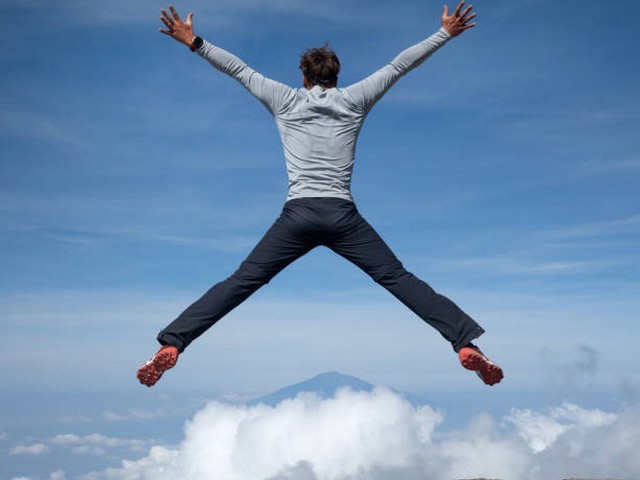Kilimanjaro’s Unique Weather and How It Affects Wildlife: A Deep Dive with KCTE
Nestled in the heart of Tanzania, Mount Kilimanjaro is not just the highest peak in Africa but also a treasure trove of ecological wonders. At Kilimanjaro Centre for Trekking and Ecotourism (KCTE), we’ve had the privilege of guiding adventurers and nature enthusiasts through Kilimanjaro’s varied landscapes, each shaped by the mountain’s unique weather patterns. In this blog post, we’ll explore how these distinctive climatic conditions affect the rich wildlife inhabiting this majestic mountain. Prepare to be inspired as you uncover the secrets of Kilimanjaro’s weather and wildlife!
The Climate of Kilimanjaro: A Mosaic of Weather Patterns
Kilimanjaro’s vast height means it hosts an array of climates, ranging from the warm, humid rainforest at its base to the icy Arctic conditions at the summit. This climatic diversity is crucial in shaping the habitats and the survival strategies of the species found here.
1. The Rainforest Zone
At the lower elevations, Kilimanjaro is wrapped in a lush rainforest belt that receives abundant rainfall. This moisture supports a variety of plant species, which in turn support diverse wildlife, from monkeys and leopards to numerous bird species. The dense foliage and constant availability of water create a stable environment where life thrives year-round.
2. The Heath and Moorland
As you ascend, the environment transitions into heath and moorland. This zone is cooler and less humid, characterized by giant heathers and grasslands. The wildlife here has adapted to cooler temperatures and windier conditions. Species such as the Kilimanjaro shrew and various bird species like the alpine chat and hill bunting find refuge in rock crevices and amongst the heathers, utilizing the moorland’s resources without the competition found in the dense rainforest below.
3. The Alpine Desert
Further up, the landscape morphs once again into an alpine desert, where temperatures can swing from hot during the day to below freezing at night. Water is scarce, and only the hardiest of species survive here. Remarkable examples include the hardy Kilimanjaro groundsel and the resilient Nubian vultures, which soar high above searching for prey.
4. The Arctic Summit
At the summit zones, conditions are harsh and Arctic-like, with temperatures often dropping below freezing. While this zone is largely devoid of wildlife, it plays an essential role in the ecological makeup of the mountain by affecting weather patterns throughout the mountain.
Understanding Kilimanjaro’s Weather Impact on Wildlife Behavior
The ever-changing weather on Mount Kilimanjaro not only dictates the physical landscape but also the behavioral patterns of the animals residing at various altitudes.
Seasonal Migrations
Seasons play a critical role in the movement of wildlife on Kilimanjaro. During the wet seasons, animals are more dispersed, enjoying the abundance of water and foliage lower on the mountain. Conversely, during the drier seasons, some wildlife migrates to higher altitudes where evening mists provide necessary moisture.
Breeding and Feeding Patterns
The unique weather patterns of Kilimanjaro also influence breeding cycles and feeding habits of the mountain’s fauna. For instance, the Kilimanjaro tree hyrax adapts its breeding season to coincide with the rainy season when food is plentiful, ensuring the young have ample nourishment.
Why This Matters
Understanding Kilimanjaro’s unique weather and its impact on local wildlife enriches the trekking experience, offering a deeper appreciation of this natural wonder’s delicate ecosystem. By choosing to trek with Kilimanjaro Centre for Trekking and Ecotourism (KCTE), you contribute to conservation efforts that protect this incredible biodiversity.
FAQs: Kilimanjaro’s Weather and Wildlife
What is the best time to visit Kilimanjaro for wildlife viewing?
The best wildlife viewing on Kilimanjaro is during the wet seasons, from March to May and November to December, when the mountain comes alive with lush vegetation and active wildlife.
How does the weather affect the difficulty of climbing Kilimanjaro?
Weather conditions such as rainfall, snow at the summit, and cold temperatures can increase the physical challenge of climbing Kilimanjaro. Choosing a reputable tour operator like KCTE ensures you have the necessary support and guidance.
Are there endangered species on Kilimanjaro?
Yes, Kilimanjaro is home to several endangered species, including some unique to the region like the Kilimanjaro tree hyrax. Conservation efforts are crucial to their survival.
Join KCTE on Your Next Adventure!
Now that you’ve glimpsed the fascinating interplay between Kilimanjaro’s weather and its wildlife, why not experience it firsthand? At Kilimanjaro Centre for Trekking and Ecotourism (KCTE), we offer expertly guided treks that respect and celebrate this mountain’s natural heritage. Whether you’re an avid birdwatcher, a wildlife enthusiast, or a budding ecotourist, Kilimanjaro has something to inspire everyone. Book your climb with us today and be part of a journey that you will cherish forever!




